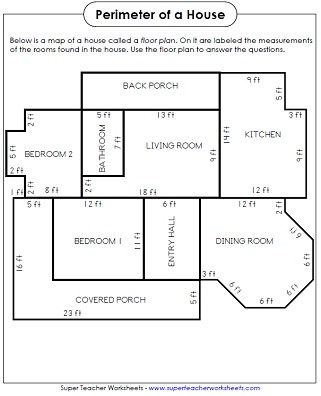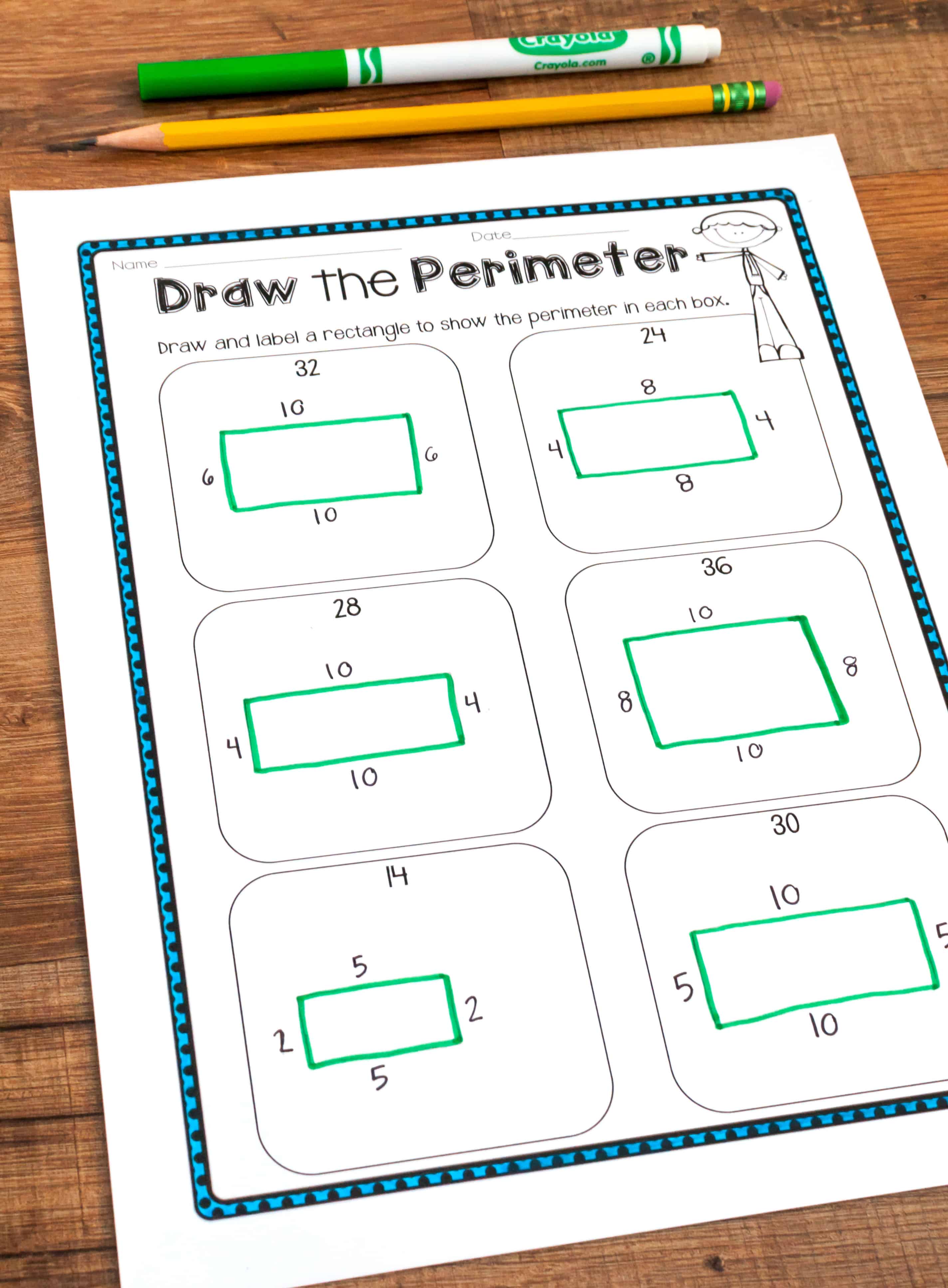ALL THE WAY AROUND...PERIMETER!
We're going to be talking about perimeter for this week's post, and let me tell ya, perimeter was one of my favorite math concepts as a kid. Math was a tougher subject for me that I often had trouble staying invested in, but my 3rd grade teacher made perimeter such a fun unit that I still remember it to this day!
We'll start off by reviewing perimeter. Where I think area can be a tricky concept for some kids between the multiplication and knowing which numbers to use, perimeter is a pretty straightforward formula. All you need to do is add up the length of all the sides and voila! You've calculated the perimeter!

In 3rd grade, we built a vegetable garden by the playground at my school to end our unit on perimeter. It was such a cooperative, hands-on activity that everyone was so excited about and it's one of the few lessons I can clearly remember from elementary school. We started by choosing a few vegetables to plant and then began mapping out the garden. Our teacher let us be so involved in the planning process- we decided we needed a wooden rectangle around the garden to fence it it, and then would need to place wooden rectangles inside of the garden to separate the different vegetables. We had to take into account how much space the different vegetables needed to grow, and eventually, my teacher had blueprints for our garden! But first- she needed us to tell her how much wood to buy. Immediately, everyone's hands went up because we all knew that she just needed to calculate the perimeters of the rectangles. She split us into teams and gave each a worksheet with a different piece of the garden to calculate. Some of the side lengths were missing which checked our understanding of geometric rules, such as that if the shape was a square, all of the sides were the same length, or that in a rectangle, opposite sides were the same length.
After calculating the perimeter of the different rectangles, our teacher went and got the materials and we spent an afternoon building the garden and planting our vegetables! It was hands down one of the most fun activities I did in elementary school, and it was so cool to be able to watch everything grow throughout my time at the school. Crazy to think it was all a math lesson...and that I enjoyed it!
While this is a great activity, it's definitely very involved and time consuming, and requires purchasing materials. Here are some fun worksheets that you can use instead (or in addition to) to help your students strengthen their perimeter knowledge!



We'll start off by reviewing perimeter. Where I think area can be a tricky concept for some kids between the multiplication and knowing which numbers to use, perimeter is a pretty straightforward formula. All you need to do is add up the length of all the sides and voila! You've calculated the perimeter!

In 3rd grade, we built a vegetable garden by the playground at my school to end our unit on perimeter. It was such a cooperative, hands-on activity that everyone was so excited about and it's one of the few lessons I can clearly remember from elementary school. We started by choosing a few vegetables to plant and then began mapping out the garden. Our teacher let us be so involved in the planning process- we decided we needed a wooden rectangle around the garden to fence it it, and then would need to place wooden rectangles inside of the garden to separate the different vegetables. We had to take into account how much space the different vegetables needed to grow, and eventually, my teacher had blueprints for our garden! But first- she needed us to tell her how much wood to buy. Immediately, everyone's hands went up because we all knew that she just needed to calculate the perimeters of the rectangles. She split us into teams and gave each a worksheet with a different piece of the garden to calculate. Some of the side lengths were missing which checked our understanding of geometric rules, such as that if the shape was a square, all of the sides were the same length, or that in a rectangle, opposite sides were the same length.
After calculating the perimeter of the different rectangles, our teacher went and got the materials and we spent an afternoon building the garden and planting our vegetables! It was hands down one of the most fun activities I did in elementary school, and it was so cool to be able to watch everything grow throughout my time at the school. Crazy to think it was all a math lesson...and that I enjoyed it!
While this is a great activity, it's definitely very involved and time consuming, and requires purchasing materials. Here are some fun worksheets that you can use instead (or in addition to) to help your students strengthen their perimeter knowledge!



Hi Danielle!
ReplyDeleteYour post caught my eye because in elementary school, I believe in 4th grade, my class also built a vegetable garden to end our unit on perimeter! It was such an excellent and fun way to close our chapter on perimeter because we finally understood how it worked. From the beginning of 4th grade, she had been telling us we were going to build this garden. We were all SO excited, we made sure to perform extra great in the classroom leading up to the lesson on perimeter. We were the only 4th grade class that created a vegetable garden, other classes did other fun things to end the lesson as well.
It's funny that you say you had finally enjoyed a lesson in math! I definitely felt the same way, who know math could sometimes be so fun and hands on? Students these days need the hands on experience and the ability to look at math lessons in the outside world. The worksheets you included are great as well, continuously practicing lessons like perimeter will definitely groom your students for the future!
Awesome post!
Alex
Hey Danielle - great post!! I remember doing a similar activity in elementary school - but I think we built a flower garden. Hard to remember at this point, but I know that we used hands on activities to learn about perimeter as students. And I found that this was really the best way to learn! I remember being excited whenever my math teachers would allow us to do a hands-on activity to teach a mathematical concept. It made math way more fun and a lot less scary.
DeleteThis doesn't have to do with perimeter, but I remember that my elementary teacher would use examples with pizza pies when learning about fractions. Pizza pies are a great way to teach adding and subtracting fractions and so I think teachers naturally gravitate towards it. But at the end of our fraction unit, our class had a huge pizza party, and I remember my friends and I all looking forward to it. Relating math to real life and making the experience more hands-on really works for young students. I see that with my preschool students all the time and have experienced it myself as an elementary student learning difficult math concepts.
Loved your post!